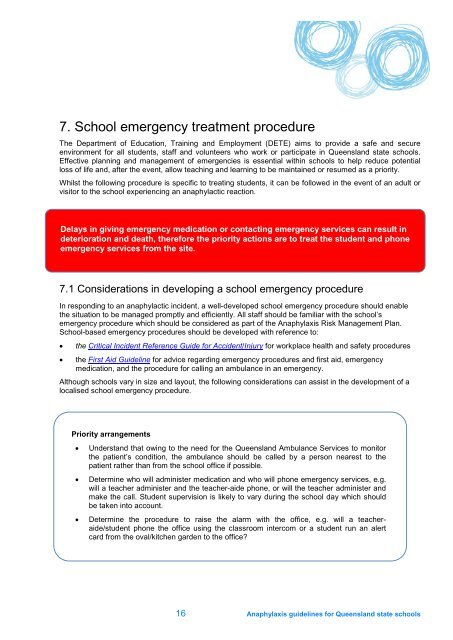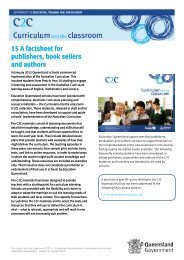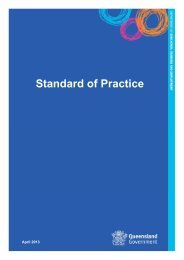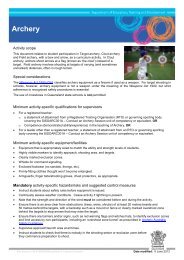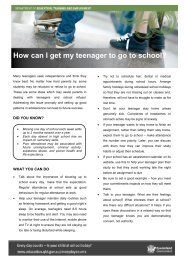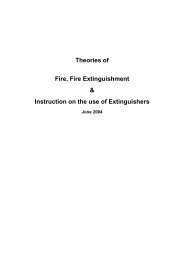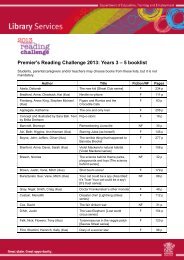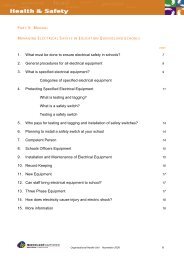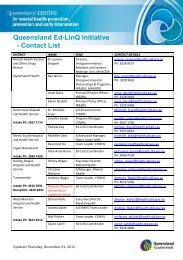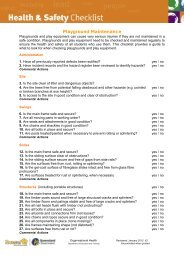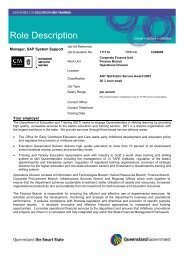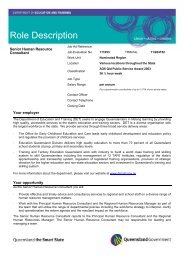Anaphylaxis guidelines for Queensland State Schools - Education ...
Anaphylaxis guidelines for Queensland State Schools - Education ...
Anaphylaxis guidelines for Queensland State Schools - Education ...
You also want an ePaper? Increase the reach of your titles
YUMPU automatically turns print PDFs into web optimized ePapers that Google loves.
7. School emergency treatment procedure<br />
The Department of <strong>Education</strong>, Training and Employment (DETE) aims to provide a safe and secure<br />
environment <strong>for</strong> all students, staff and volunteers who work or participate in <strong>Queensland</strong> state schools.<br />
Effective planning and management of emergencies is essential within schools to help reduce potential<br />
loss of life and, after the event, allow teaching and learning to be maintained or resumed as a priority.<br />
Whilst the following procedure is specific to treating students, it can be followed in the event of an adult or<br />
visitor to the school experiencing an anaphylactic reaction.<br />
Delays in giving emergency medication or contacting emergency services can result in<br />
deterioration and death, there<strong>for</strong>e the priority actions are to treat the student and phone<br />
emergency services from the site.<br />
7.1 Considerations in developing a school emergency procedure<br />
In responding to an anaphylactic incident, a well-developed school emergency procedure should enable<br />
the situation to be managed promptly and efficiently. All staff should be familiar with the school’s<br />
emergency procedure which should be considered as part of the <strong>Anaphylaxis</strong> Risk Management Plan.<br />
School-based emergency procedures should be developed with reference to:<br />
• the Critical Incident Reference Guide <strong>for</strong> Accident/Injury <strong>for</strong> workplace health and safety procedures<br />
• the First Aid Guideline <strong>for</strong> advice regarding emergency procedures and first aid, emergency<br />
medication, and the procedure <strong>for</strong> calling an ambulance in an emergency.<br />
Although schools vary in size and layout, the following considerations can assist in the development of a<br />
localised school emergency procedure.<br />
Priority arrangements<br />
• Understand that owing to the need <strong>for</strong> the <strong>Queensland</strong> Ambulance Services to monitor<br />
the patient’s condition, the ambulance should be called by a person nearest to the<br />
patient rather than from the school office if possible.<br />
• Determine who will administer medication and who will phone emergency services, e.g.<br />
will a teacher administer and the teacher-aide phone, or will the teacher administer and<br />
make the call. Student supervision is likely to vary during the school day which should<br />
be taken into account.<br />
• Determine the procedure to raise the alarm with the office, e.g. will a teacheraide/student<br />
phone the office using the classroom intercom or a student run an alert<br />
card from the oval/kitchen garden to the office?<br />
16 <strong>Anaphylaxis</strong> <strong>guidelines</strong> <strong>for</strong> <strong>Queensland</strong> state schools


